Follow ups are tricky business. The newly revived Aquastar brand is intimately familiar with the concept, having brought back a number of the brand’s greatest hits since first emerging with a modern Deepstar in 2020. This is a brand that boasts some of history’s most innovative dive watches, and bringing them back in a manner that not only preserves that heritage, but also brings them into a modern era for a new audience is no small task. That is to say nothing of the path it lays forward, as in, once you’ve brought the watches back as they were, where do you go from there? Aquastar is, in many ways, still grasping with those questions, but they have wasted little time in resurrecting their most historically significant references, the latest of which is the Benthos 500 diving chronograph.
Aquastar was formed in the early ‘60s with a laser focus on dive watches after the success of the Aquastar 60 released by the legacy brand Jean Richard. The simple watch would set the template for the skin diver as we know it today. The watch was conceived by Jean Richard’s son, Frédéric Robert, who was an avid scuba diver with bigger ambitions than a single watch. In 1962 Frédéric would formally launch the Aquastar brand to put his ideas into action. The period that followed delivered a litany of patents and innovation around building a better dive watch, birthing a new generation of Deepstar watches, the Aquastar 63, and the Benthos, to name just a few. Aquastar watches were prolific in the dive community, and Frédéric would even end up playing a role in the development of Omega’s PloProf, which is detailed in the full review of that watch right here.
Following Frédéric Robert’s retirement in 1975, the Aquastar brand was sold to the Eren Group, who continued to produce more mainstream dive watches until the early ‘80s. That small window of production in the ‘60s and early ‘70s with no real follow up is likely why the brand doesn’t enjoy the same level of awareness that many other brands do, but Aquastar was just as impressive as any other manufacturer operating at the time, and deserve all the recognition they can get today in the form of these revival watches.
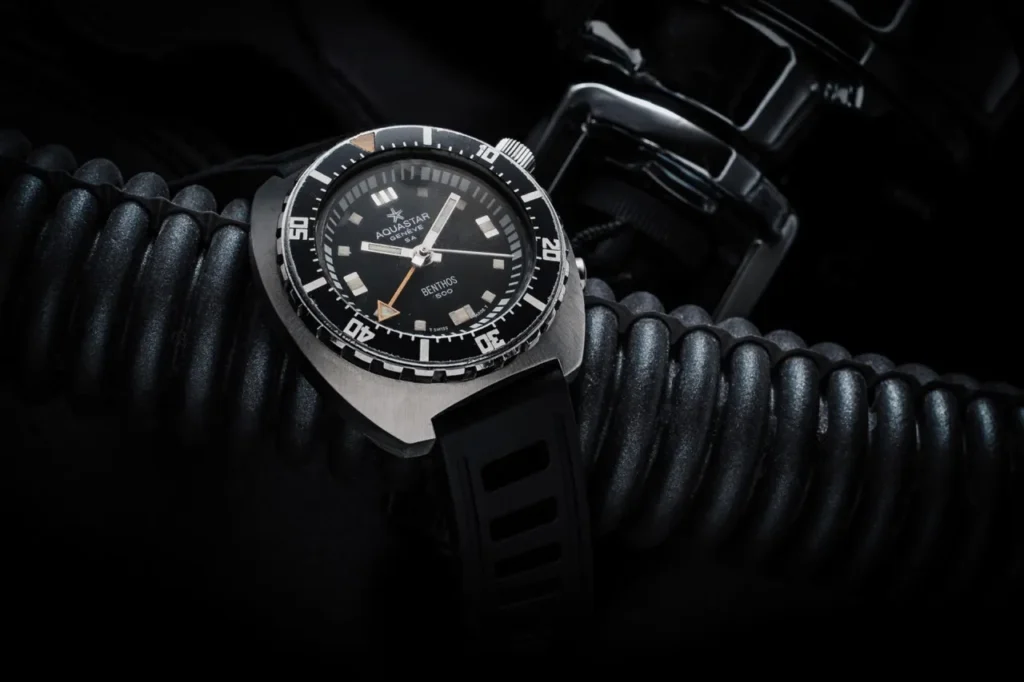
While the Model 60 and Model 63 enjoy the most interesting and meaningful connections to the world of diving, it was always the Benthos 500 that captured my curiosity. First launched in 1970, the Benthos used a different case shape that was more cushion shaped than other Aquastar watches, and it uses a chronograph layout rarely seen both then and now that pushes it over the top. The Benthos 500 is a centrally mounted chronograph with a single totalizer hand and no sub dials. It also has an external rotating bezel, and a single pusher mounted on the same side of the case as the crown.
The original Benthos 500 was unique even in its day, including for some less obvious reasons. It was the first dive watch to get a 500 meter depth rating without the use of a monobloc case. Such a depth rating is just as impressive today, though it’s not entirely uncommon. What is far less common is the use of a centrally mounted chronograph complication. Aquaster used an A. Schild automatic movement to achieve this (the 1902 for launch, and the 2162 in the second generation). This allowed the watch to retain its high legibility with minimal fuss, while offering the ability to time up to 60 minutes at a time with the press of a pump pusher. This movement, coupled with the massive 500 meter depth rating, placed this watch on the larger end of the scale, even amongst other deep divers of the day.
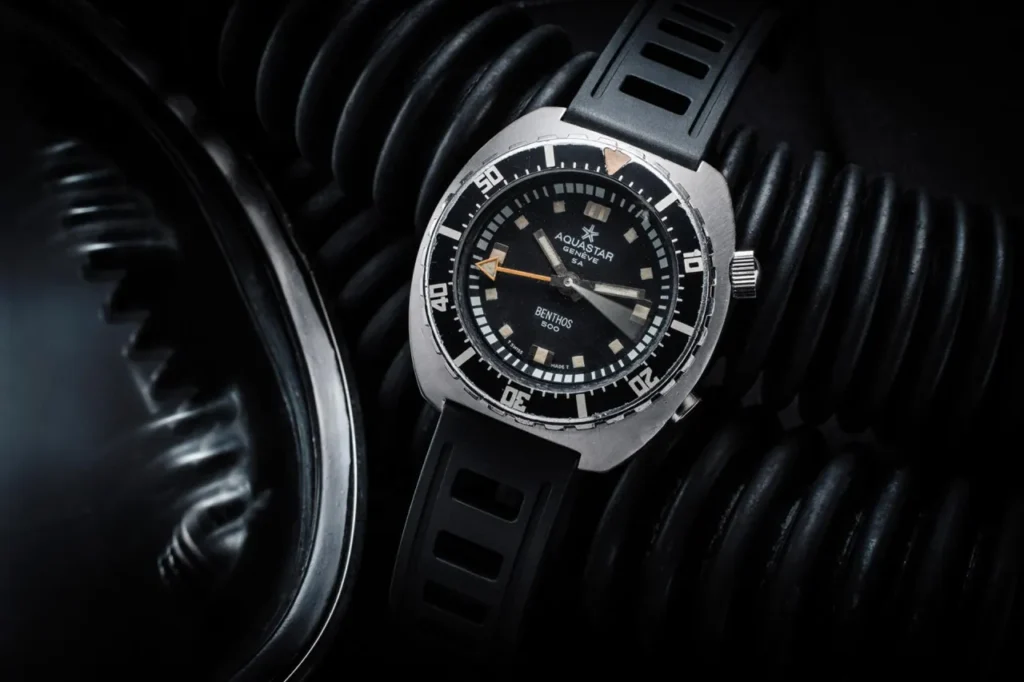
The first generation Benthos used a steel case with somewhat unique proportions. It measured 43mm in diameter, 46mm from tip to tip, and 16mm in thickness. The central barrel of the case was curved in a continuous motion, integrating the lug design in the process, while retaining the flat section between to keep the skin diver vibes. The second generation shaved a mm off the diameter, but was just as thick and kept a similar profile. This was a function first design, so a bit of bulk was less of a stressor than it would have been otherwise. What mattered was the utility of the design, which it had in spades.
These are important numbers to keep in mind before considering the modern iteration of the Benthos 500. In some respects, this watch is a bit similar to the PloProf, in that the design and form is uncompromising, and makes no allusions to being an all-rounder. This watch has a central focus, and these days the design is more about honoring that history than it is about providing a viable tool watch that’s great for daily wear. It is most certainly not that. This is a watch that celebrates the history of the brand, and picks up on some of the innovations in a way that feels just as special today.
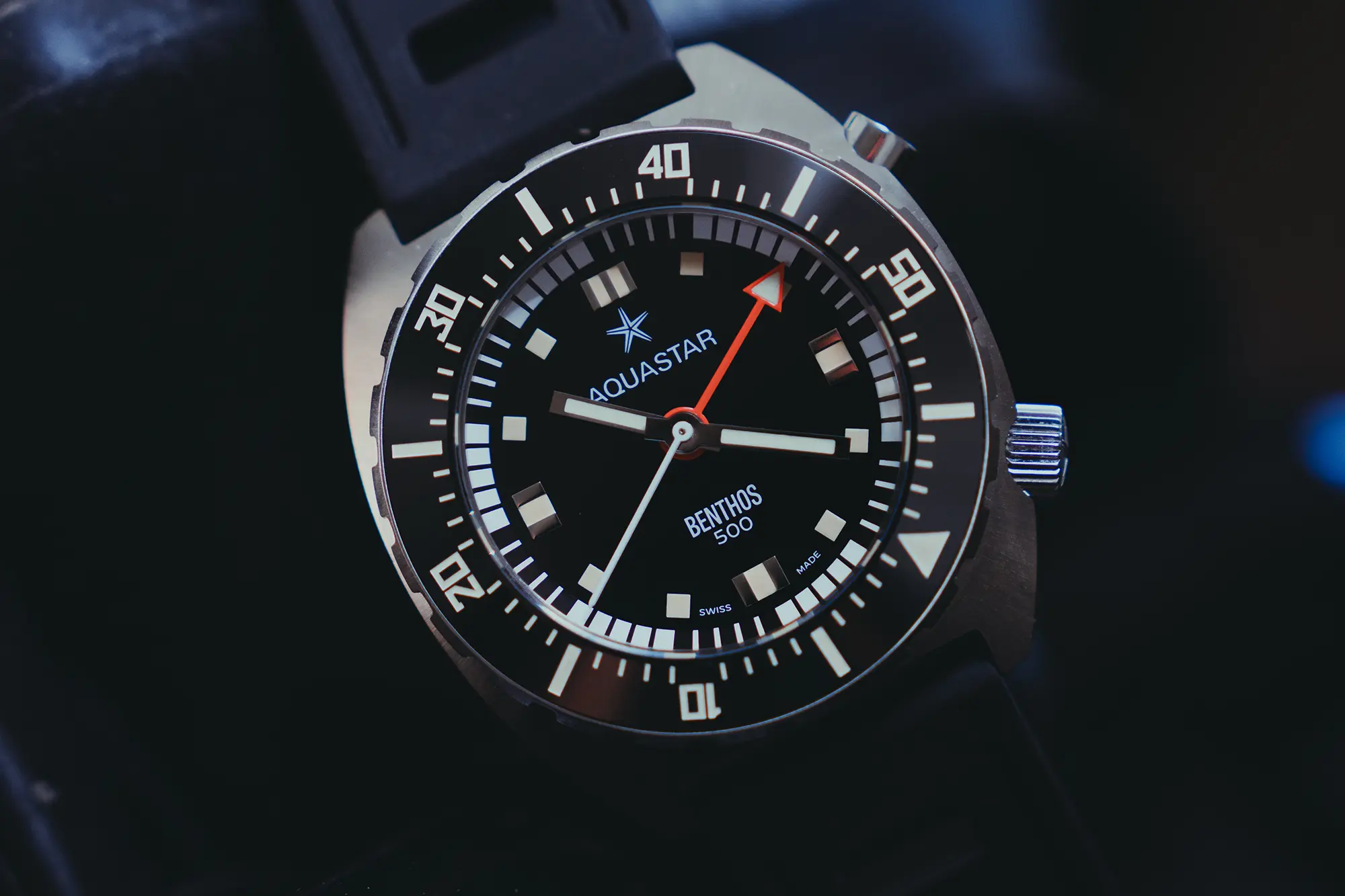
The modern Benthos 500 picks up where the original left off, but not before a time-only variation was released last year. This was a showcase of the design before the chronograph was ready to be implemented. As lovely as the design was, it wasn’t what we were looking for in a new Benthos. That watch would arrive earlier this year, and it took a partnership with La Joux-Perret to get the movement situated, as there are no off the shelf centrally mounted chronograph options out there at the moment (that are anywhere near reasonably priced), unfortunately. Sinn uses a modified Valjoux 7750 for their EZM1.1, which also features a centrally mounted chronograph.
Aquastar worked with La Joux-Perret on the movement for the Benthos 500, and the result is the Caliber 1MPS. This is a 40Hz automatic movement that allows for a near identical configuration as the A. Schild found in the original. The central hand stack hosts the hour, minute, and seconds hands, with the addition of a minute totalizer hand at its base. This is parked at 12 o’clock until the chronograph is actuated, at which point the orange hand slowly kicks into action, tracking each minute that passes. The minute index resides in the angle rehaut, and transitions from black to white in five minute segments, making it easier to gauge the elapsed time being tracked.
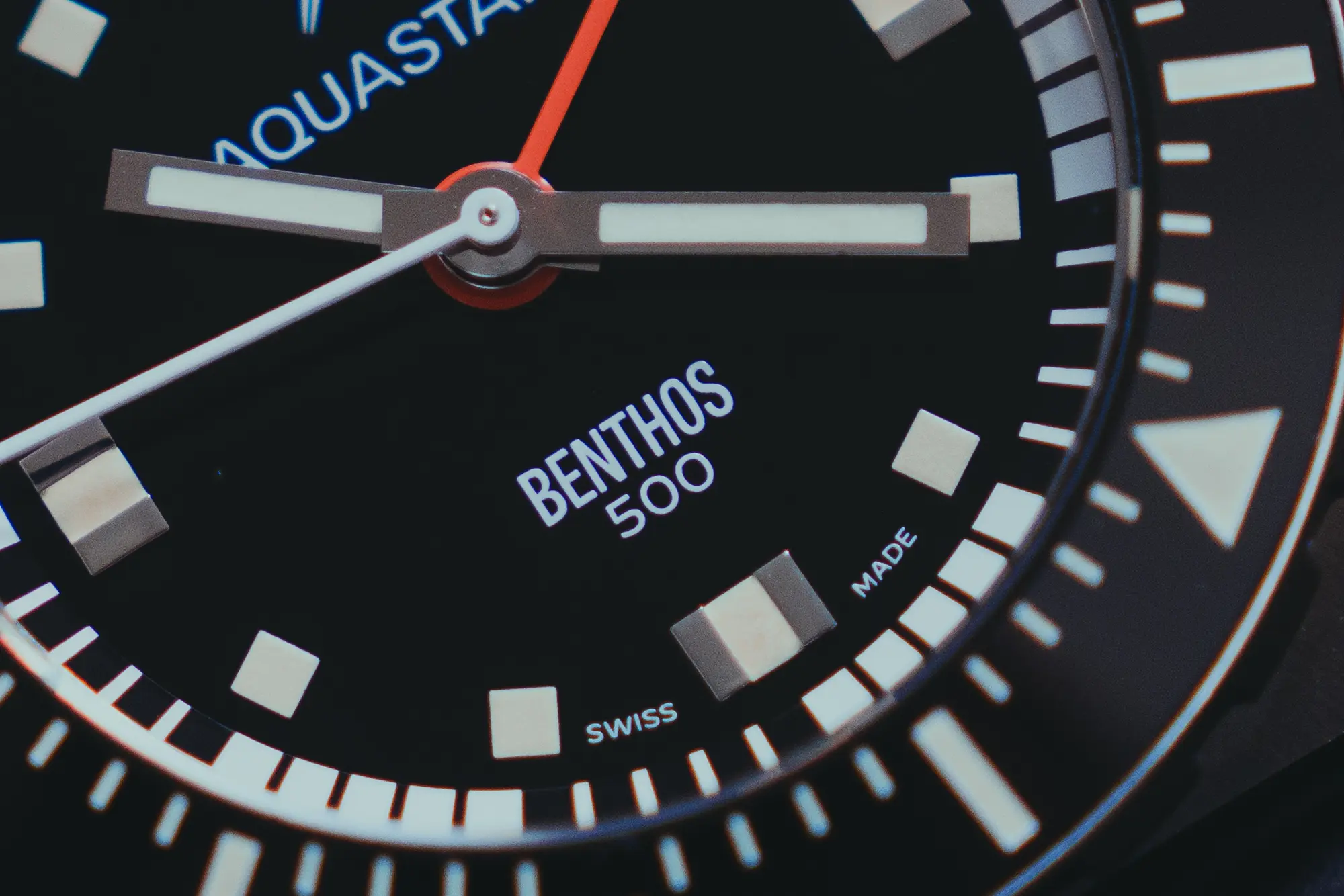
In total, the look and feel is faithful to the most important elements of the original, but there are a few changes that have been made. First, the crown and pusher positions have been swapped for the original, with the crown now residing at the 4 o’clock position, and the pusher located at 2 o’clock. Perhaps more importantly, the case itself has shaved a little over half a millimeter off of the thickness, thanks to a lower profile bezel assembly. I’d argue that the difference between a 16mm thickness and 15.4mm thickness will hardly yield much of a practical benefit, but it’s a slightly tidier package overall as a result. In fact, I’d exchange the small bit of added height in return for the retention of the original depth rating for which the watch is named.
The new Benthos 500 gets a 200m depth rating, despite all that thickness (and the 500 printed at the bottom of the dial). This feels an odd departure, and I suspect it comes down to the pump pusher of the chronograph being usable at depth. One look at the case and you’d be forgiven for thinking that this might be a 1,000 meter diver, especially when considering watches like the Sinn U50 at barely over 11mm in thickness, have a 500m depth rating, but finding a watch with a usable chronograph pusher at depth is another story.
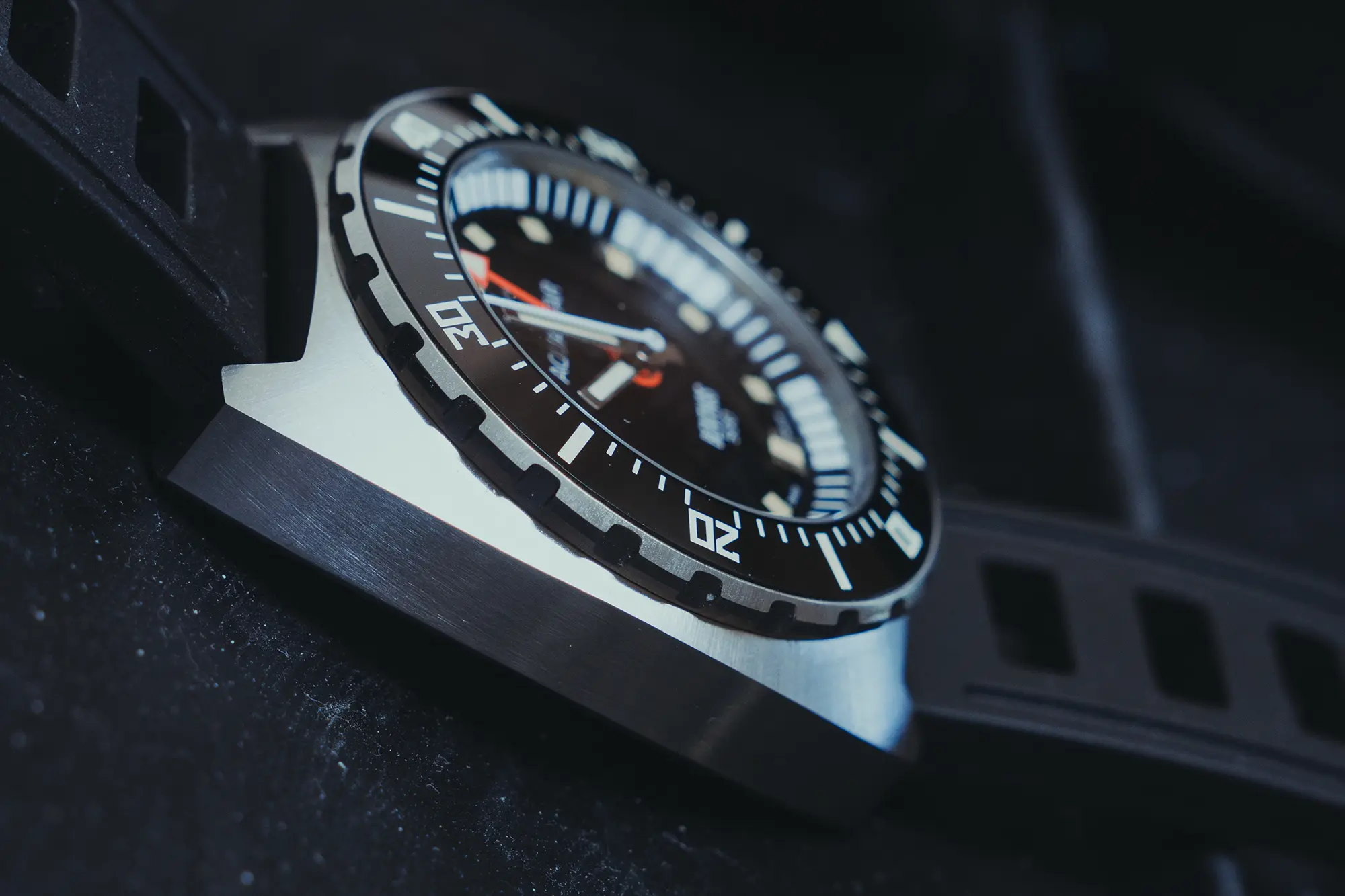
The Doxa SUB 200 T.Graph with pump pushers also has a 200m depth rating, while the Omega Seamaster 300 Chronograph needs 17.2mm of thickness for its 300m depth rating. With this context, the new Benthos feels perfectly reasonable, while also making the original all the more impressive, though I’d hazard a guess that the way depth ratings are measured these days is a bit different to how it was done in the ‘60s. The International Organization for Standardization (ISO) introduced the standards and features for diving watches regulated by the ISO 6425 was only implemented in 1996.
Truth be told, 200m (of 656ft) is well beyond what any recreational diver would experience, and many commercial divers as well. The extra 100 or even 300 meters makes little difference on the overall technical abilities of the watch, and the only real disconnect is the ‘500’ right in the name and on the dial in this case. You’d have to turn the watch over to see the actual depth rating listed. It’s not a deal breaker by any stretch, but it’s important to note when considering the watch as a whole.
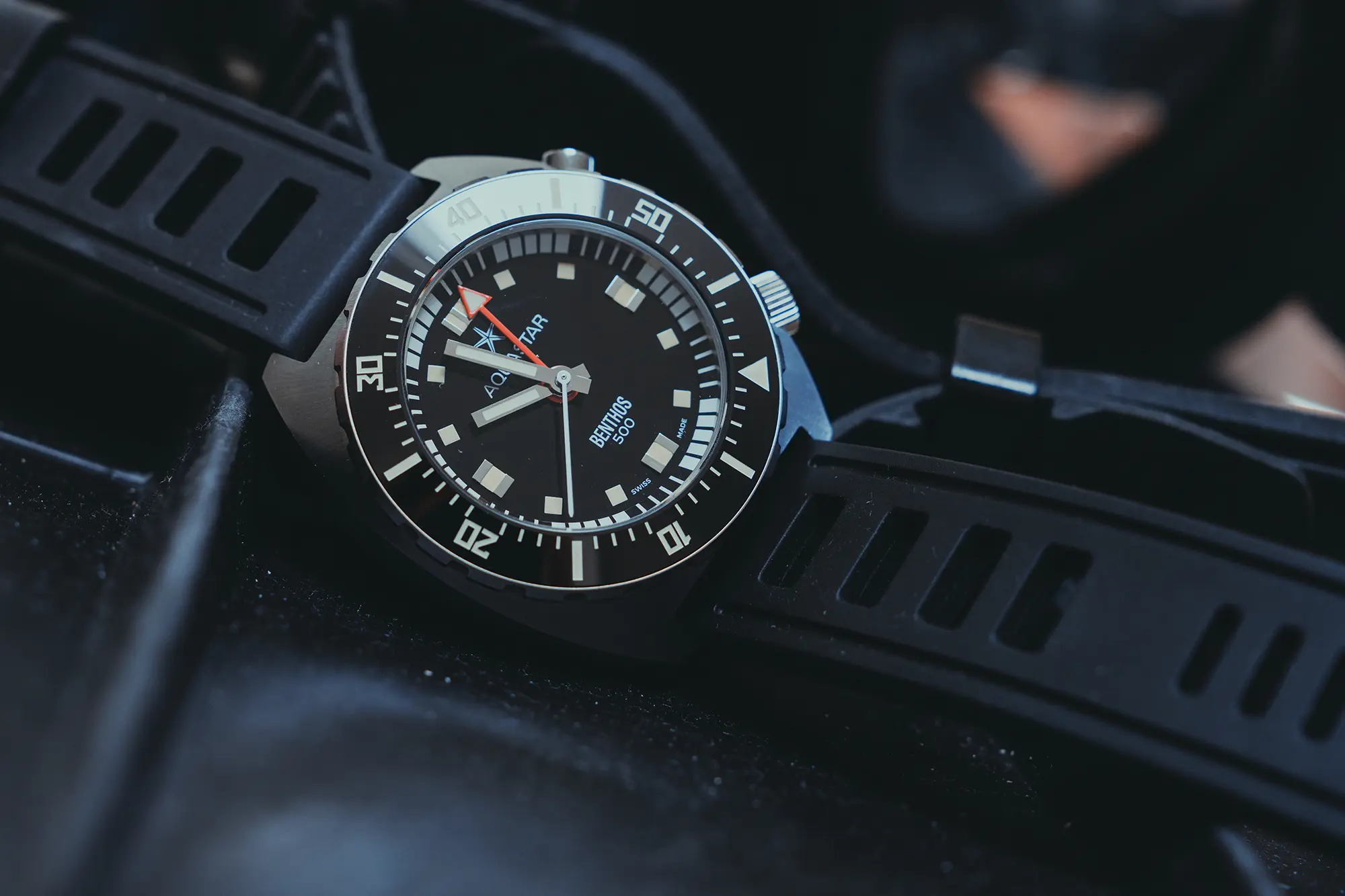
Setting the technical details and considerable heritage aside, what is the modern Benthos 500 like in daily life? Well, this is not a dive watch that can get away with being a great everyday tool watch like a Pelagos 39 or Sinn U50. And it’s not trying to be. It’s a bit of a bear on the wrist but manageable to a certain degree, especially with a strap option other than the supplied rubber tropic. This is a fun watch to wear and experience, especially if you understand its roots and have an affection for the history of diving. It is a very maximal experience on the wrist, but surprisingly pleasant at the same time thanks to the reasonable 46mm lug to lug length. It tucks in nicely while sitting rather tall, as you might imagine.
The dial design is unique and easy to navigate, and the centrally mounted chronograph only adds to that experience. I wish there were more chronographs with this configuration out there, so the fact that this exists at all is a win in my book. Further still, this is the kind of watch that will evangelize a somewhat hidden element of dive watch history. This is a watch that captures an important piece of that history thanks to its mostly faithful reproduction, but at the same time it’s not breaking much new ground, and it leaves me wondering how they could build on this concept in a modern way.
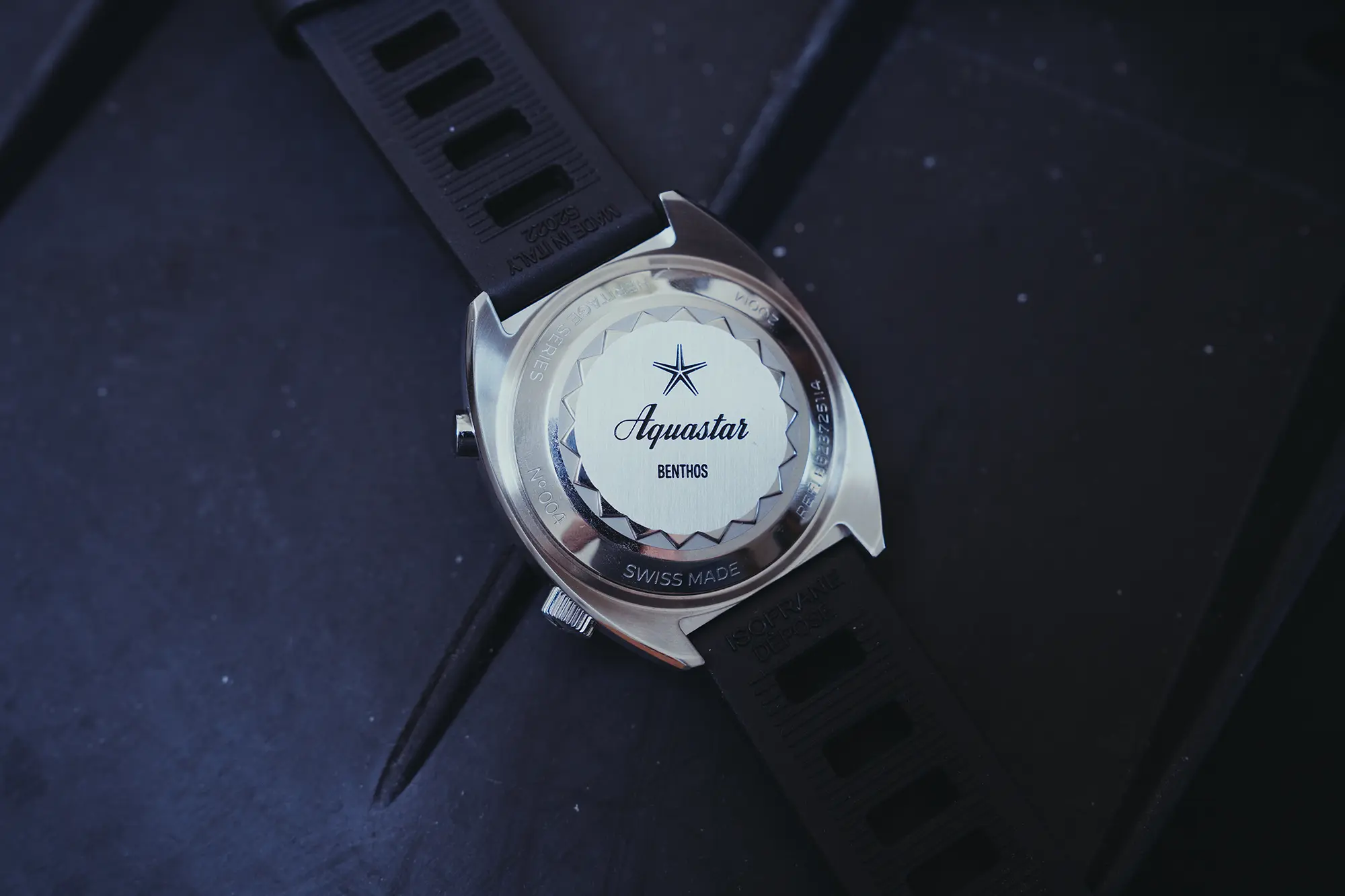
The original intention of Frédéric Robert was seemingly to blaze new trails in the dive watch space by putting his innovative ideas to use. Over a dozen patents are a testament to that. I’d love to see a modern Aquastar take that same concept and continue to run with it while also honoring its history. Each of the modern diving chronographs mentioned above, the Sinn EZM1.1, the Doxa SUB T.Graph, and this Benthos 500 each stick to the original formula that made them great in the first place, but none really move the bar forward, and that’s my biggest critique of watches like this. They are important in other ways, and the modern world of diving is far less reliant on tools like this, meaning there may be no practical path forward within which innovation can be found, but it’s a spirit that is missed from these brands.
Overall, the new Benthos 500 is a wonderful tribute to the original, and gets the important details right in the process. It’s not perfect, the rotor is loud and has a bit of wobble, the rubber ISOfrane strap is cumbersome, and the crown is finicky to use, but the character that needs to be there, is there. And getting this watch made at a price tag under $4,000 deserves a huge amount of respect. But when I look at how this watch was evolving in the ‘80s, I can’t help but wonder what that throughline would have looked like had it continued unbroken. And I’d love to see Aquastar tackle that concept.
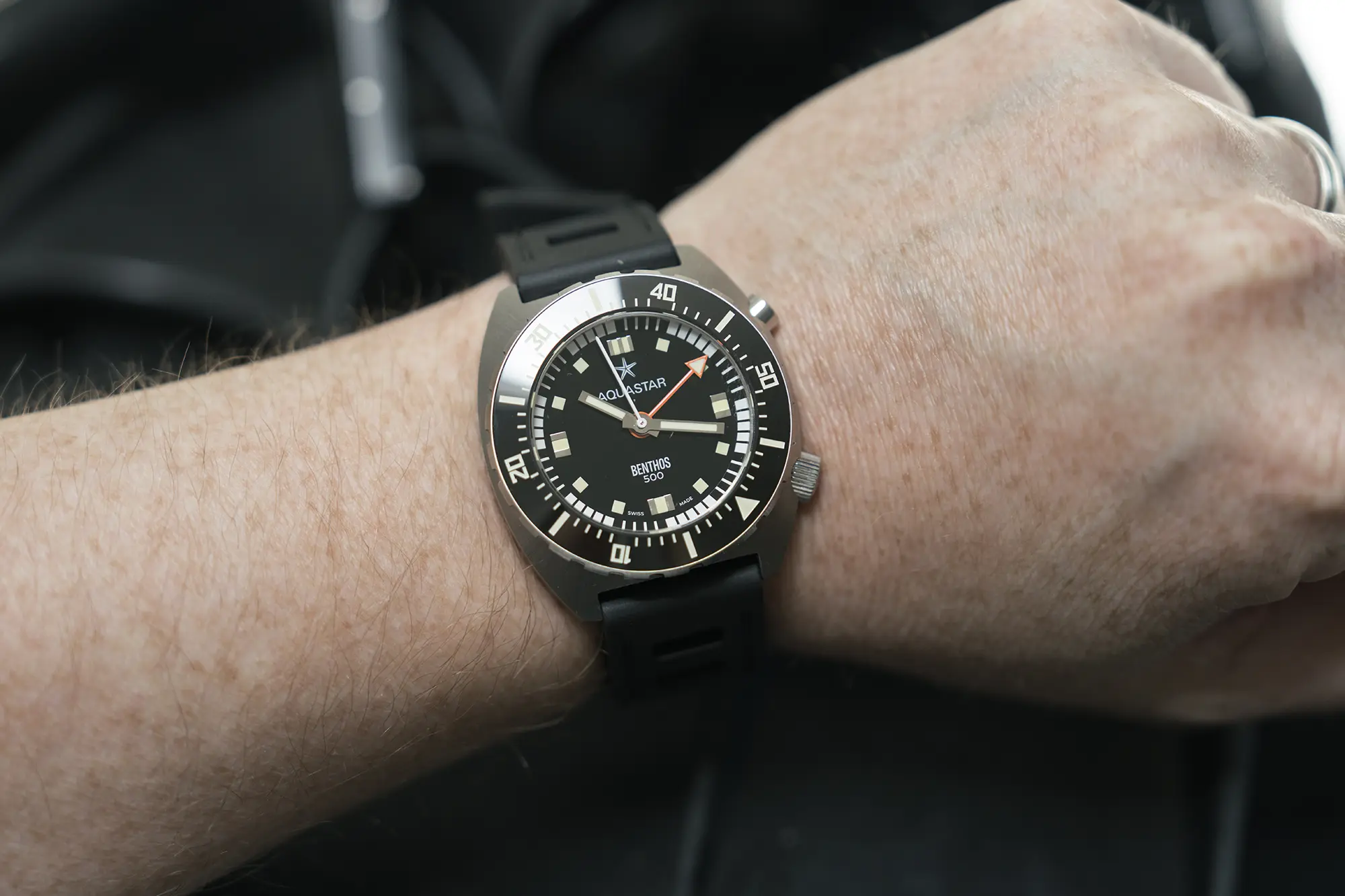
The Aquaster Benthos 500 is limited to 300 units, and is priced at $3,790. While the pre-order window has closed, there are available slots for shipping in June. Aquastar
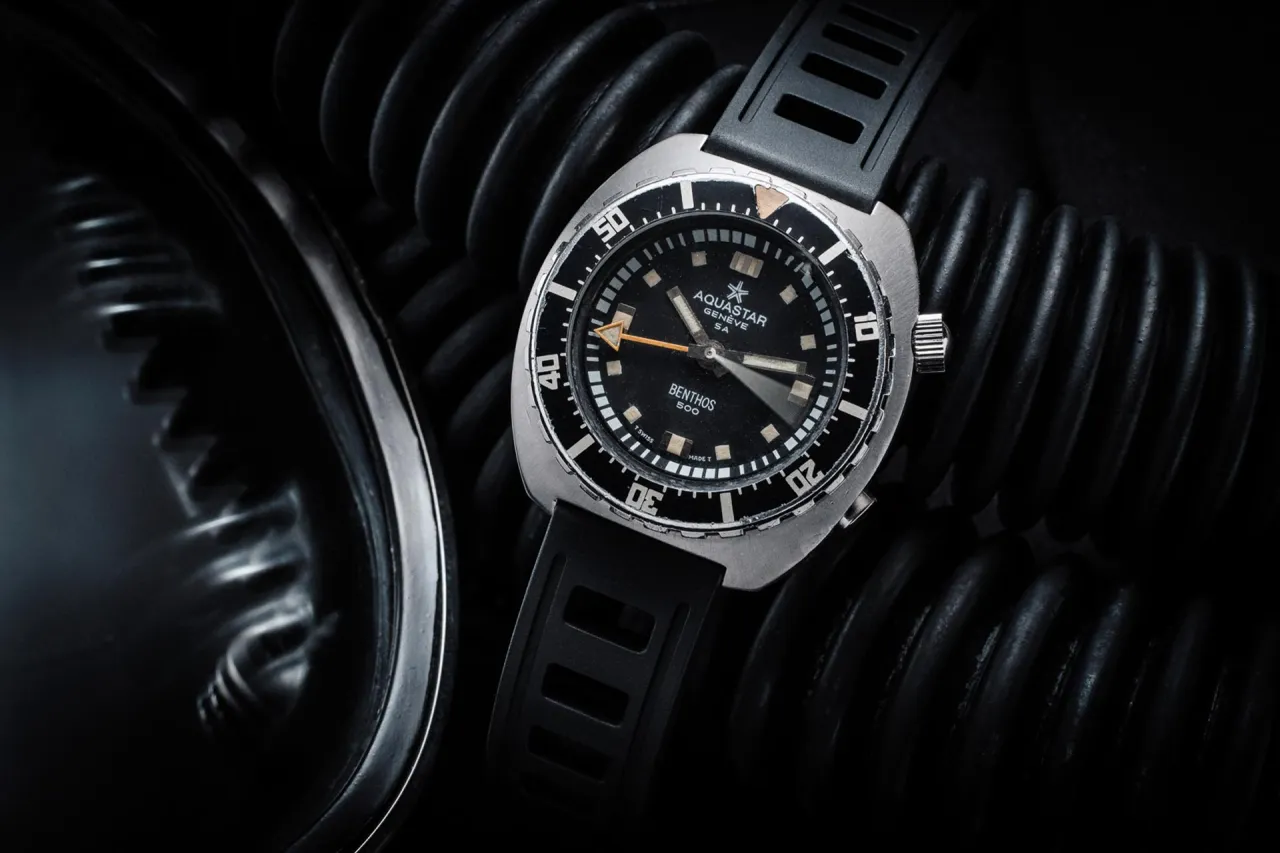

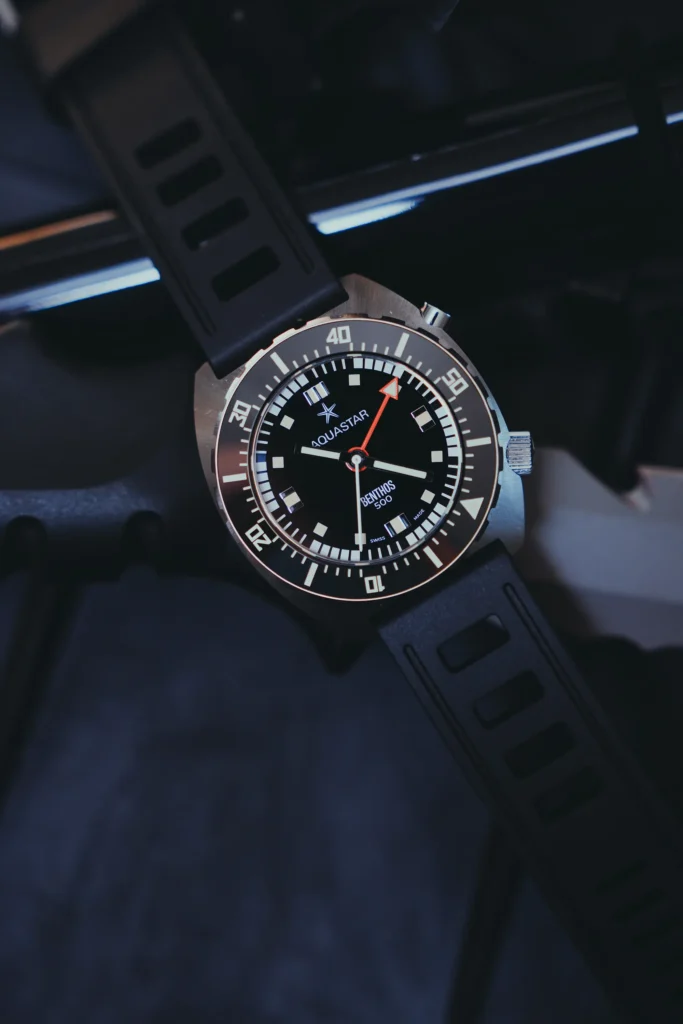
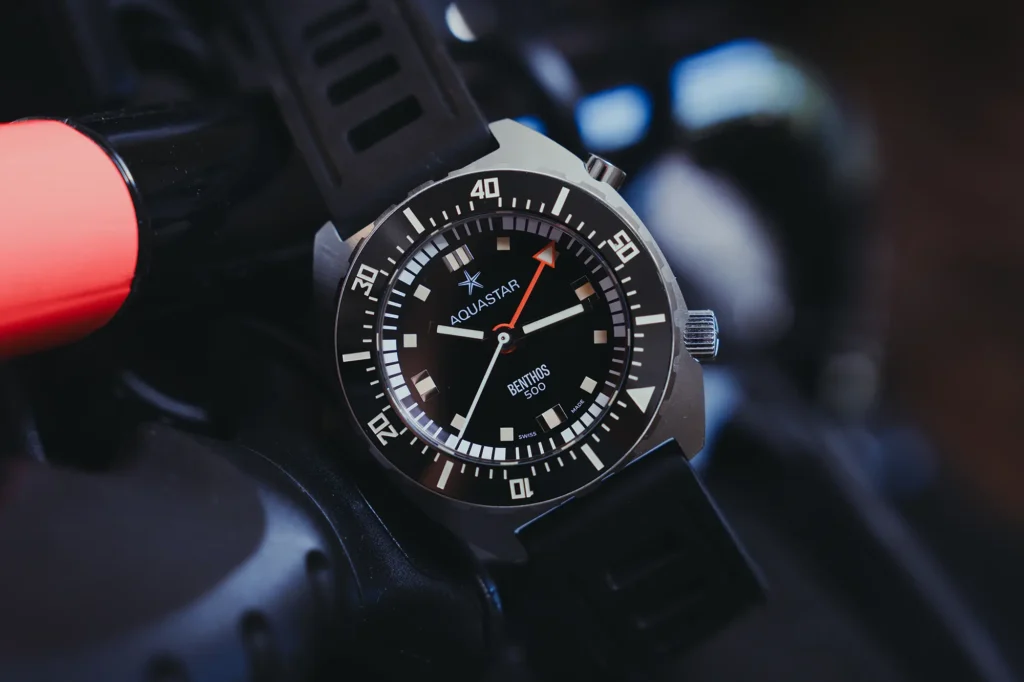
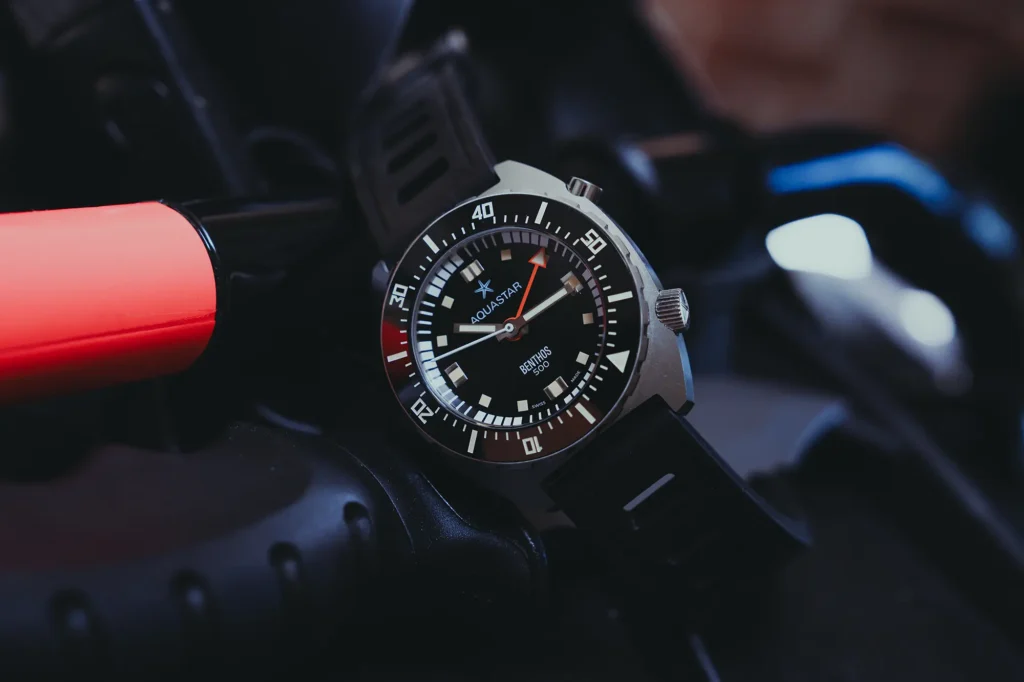
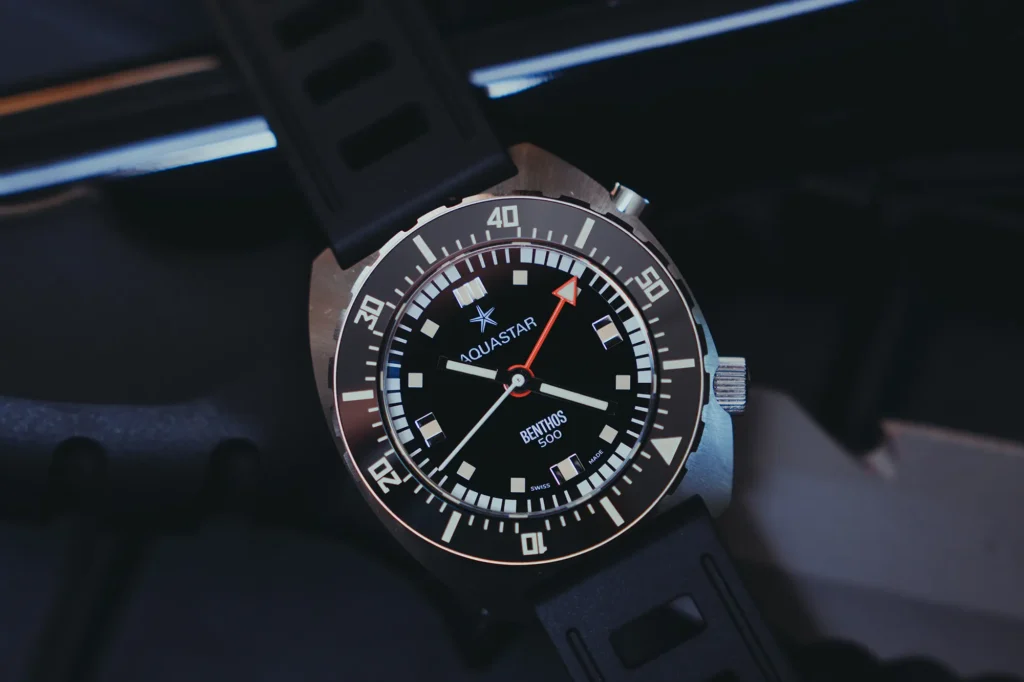
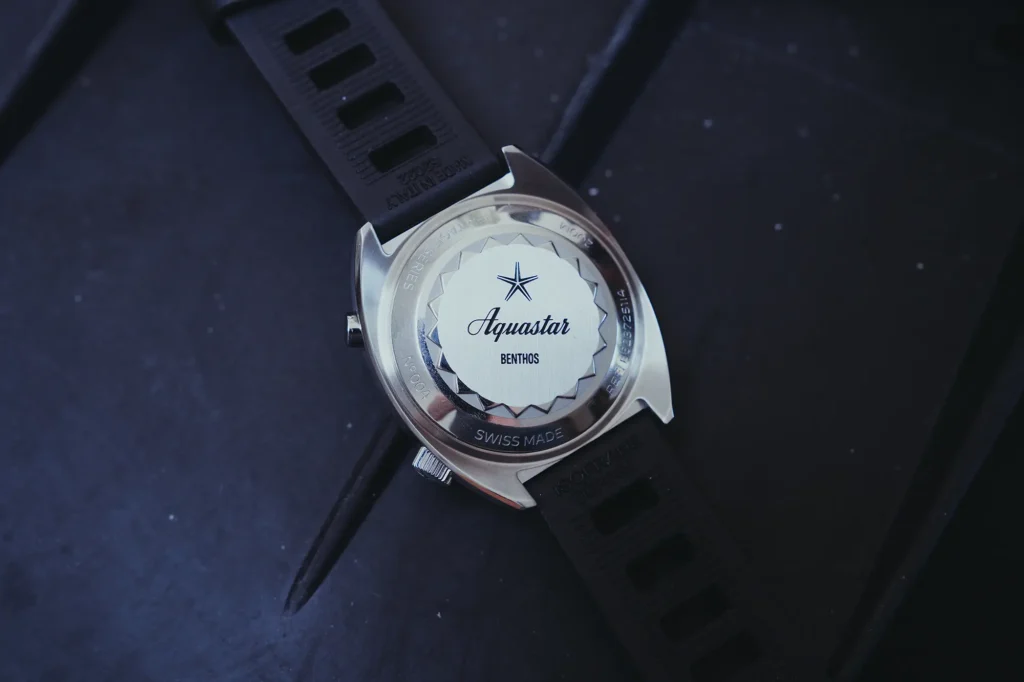
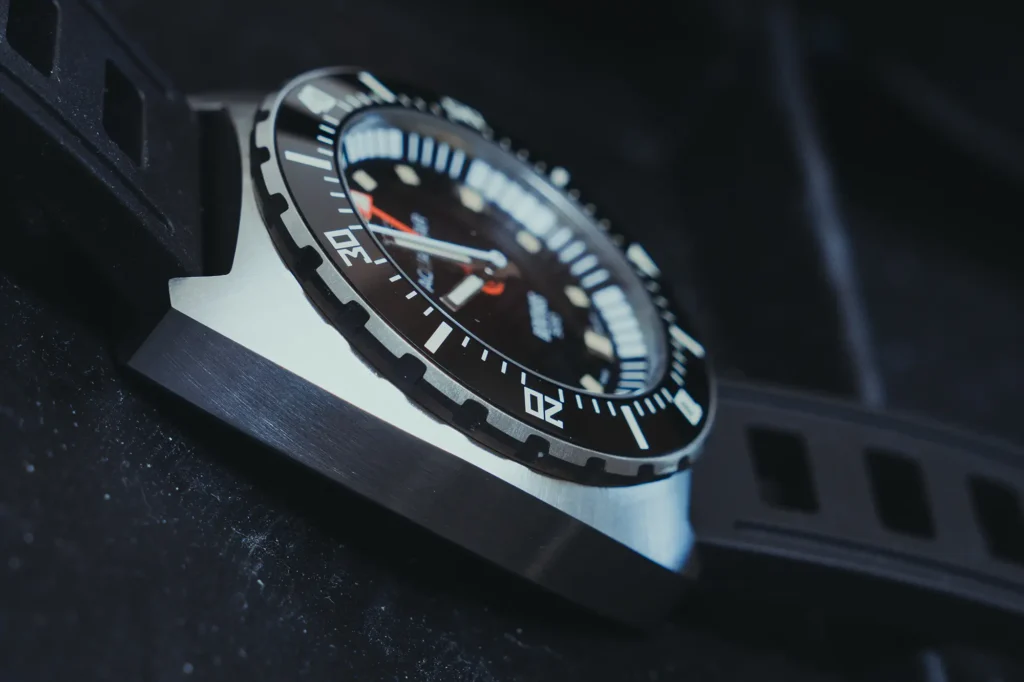
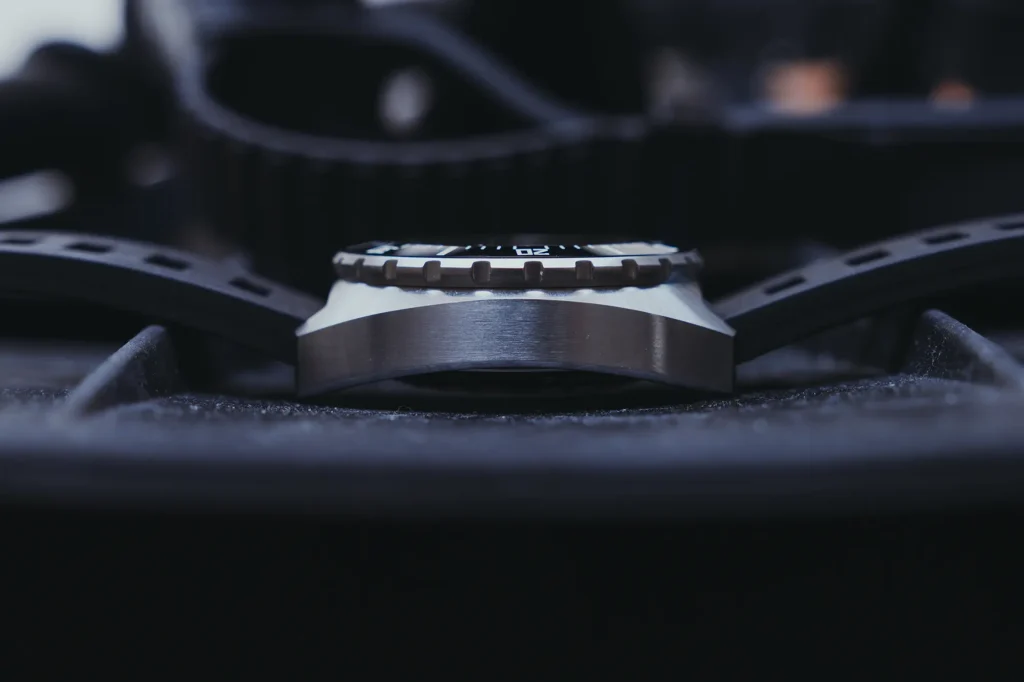
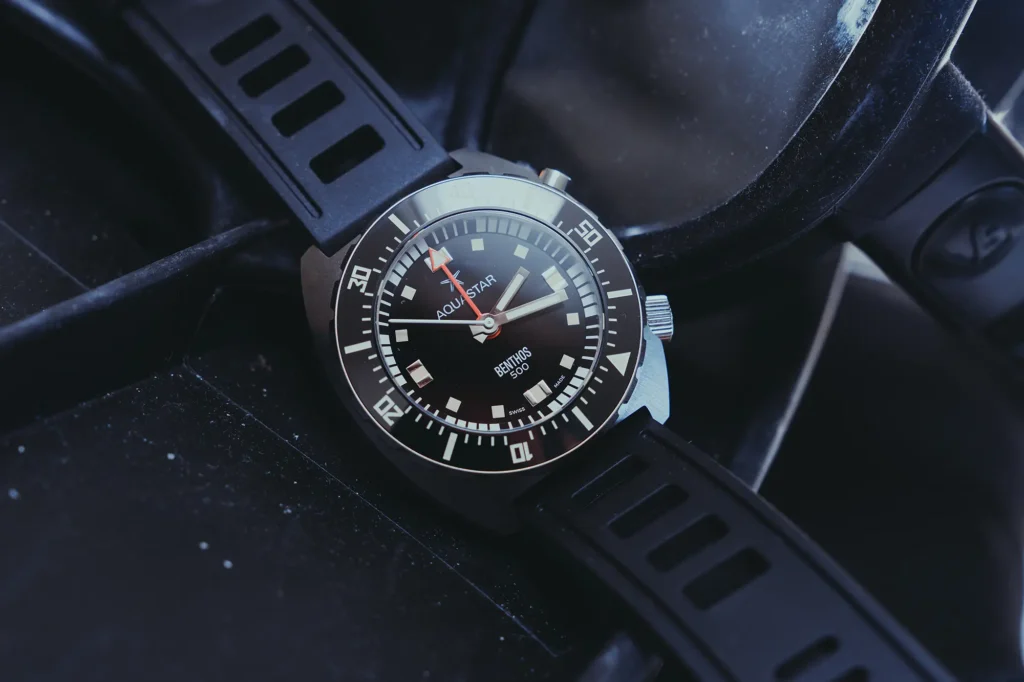
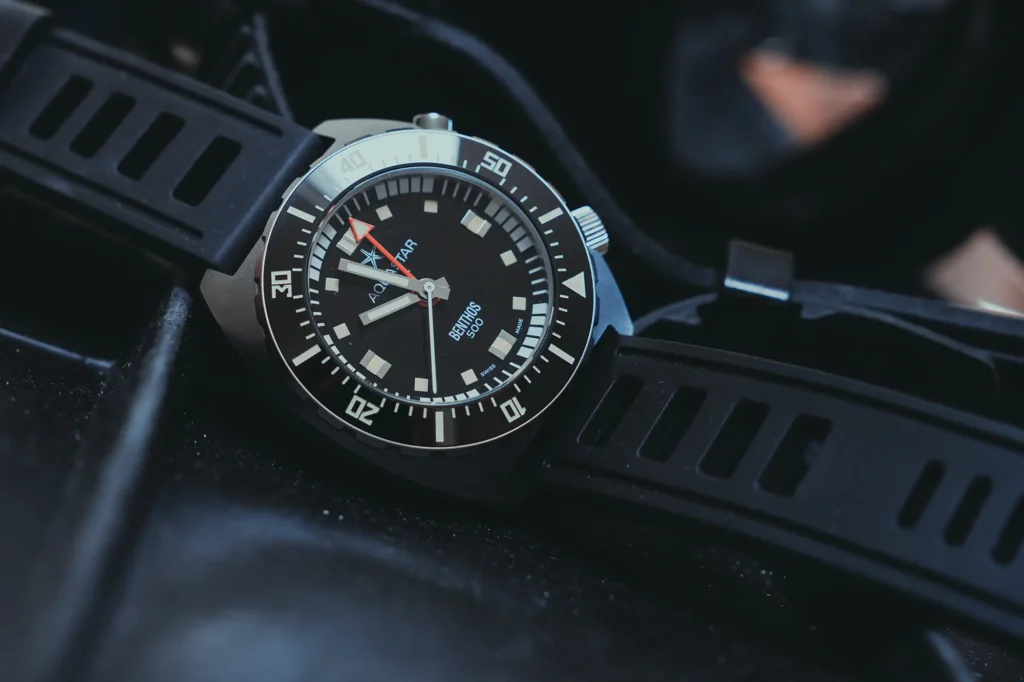
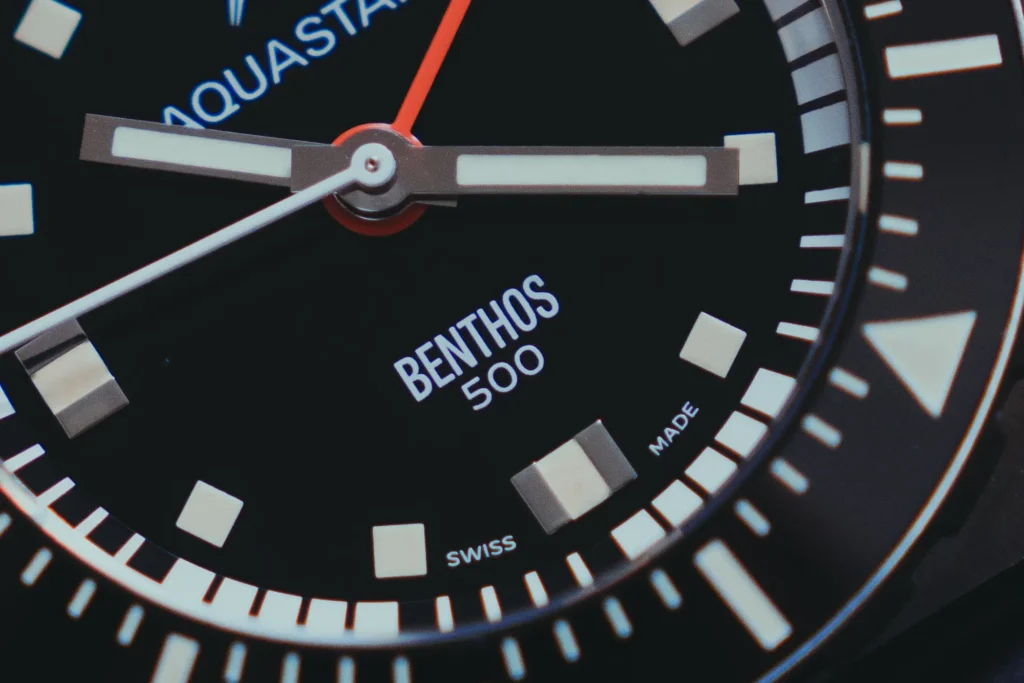
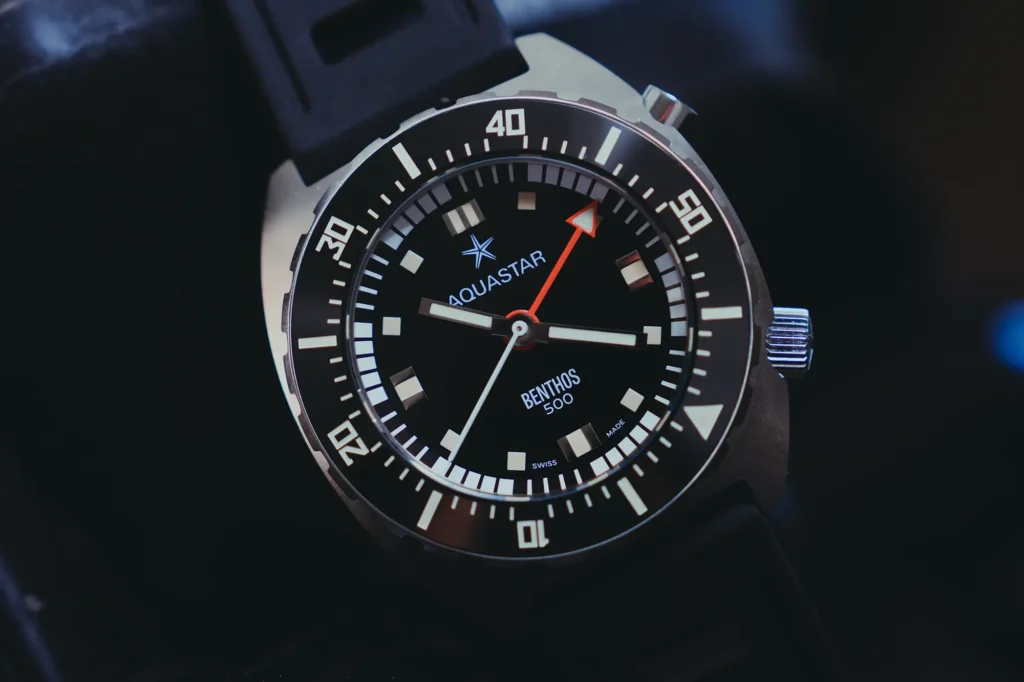
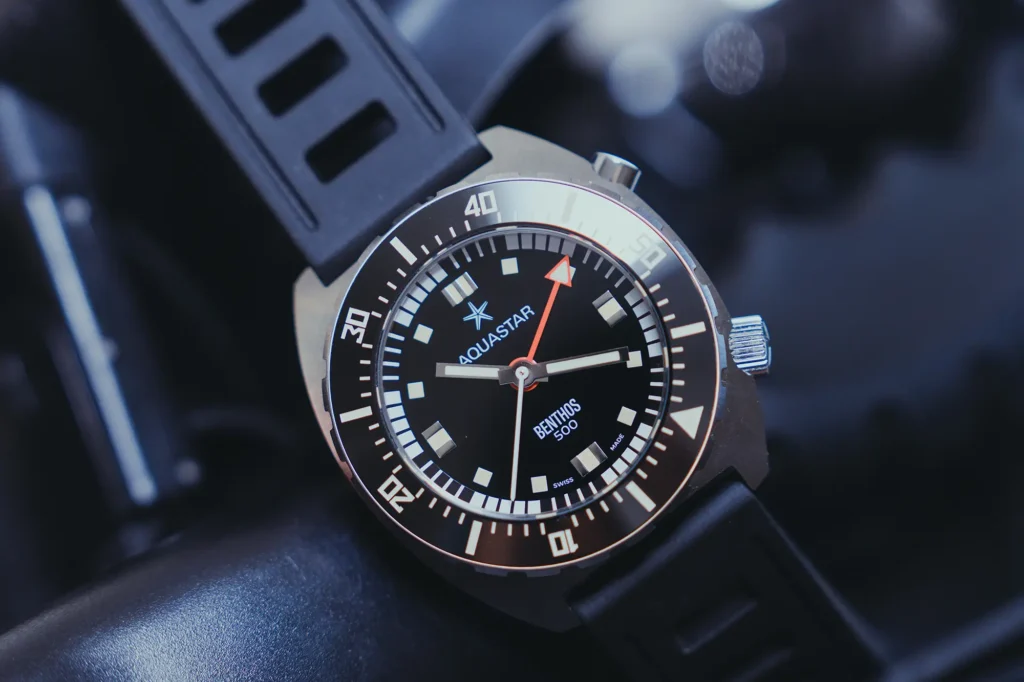
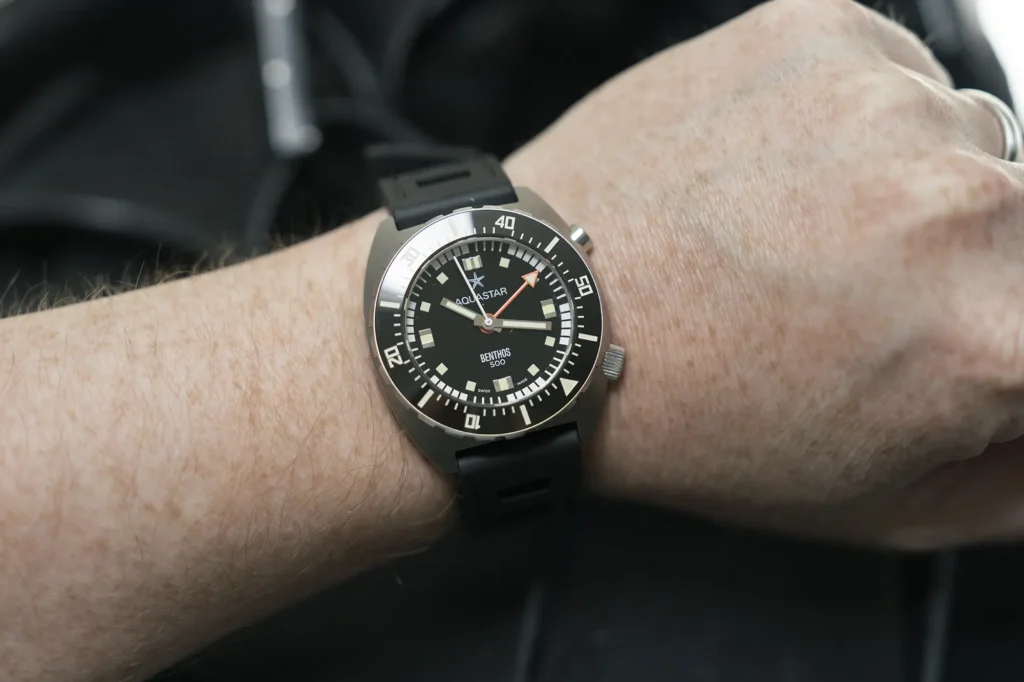
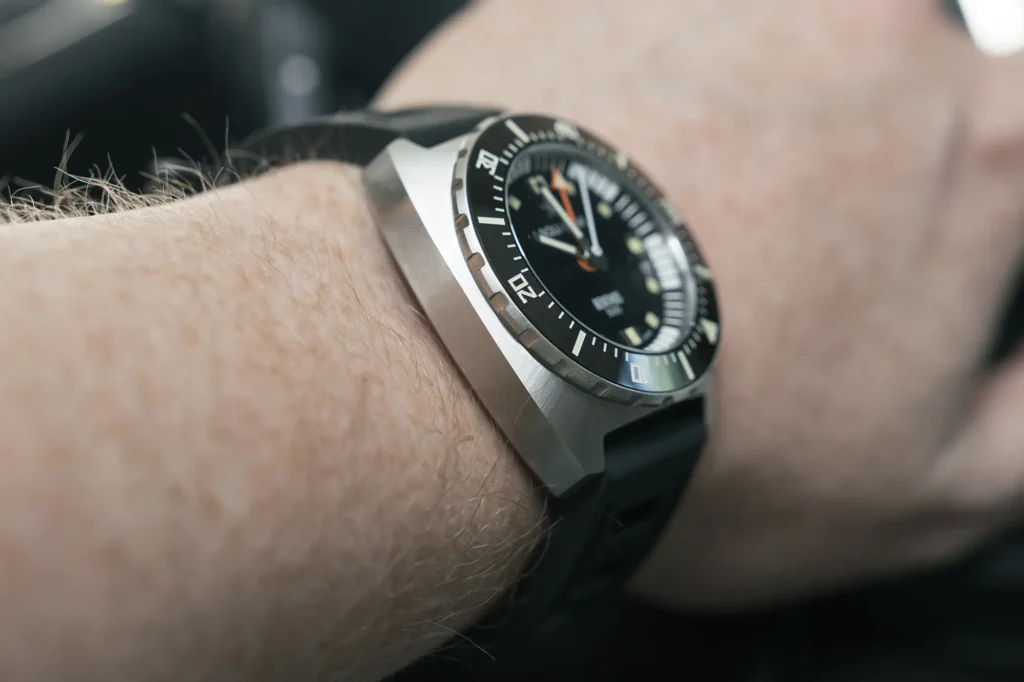

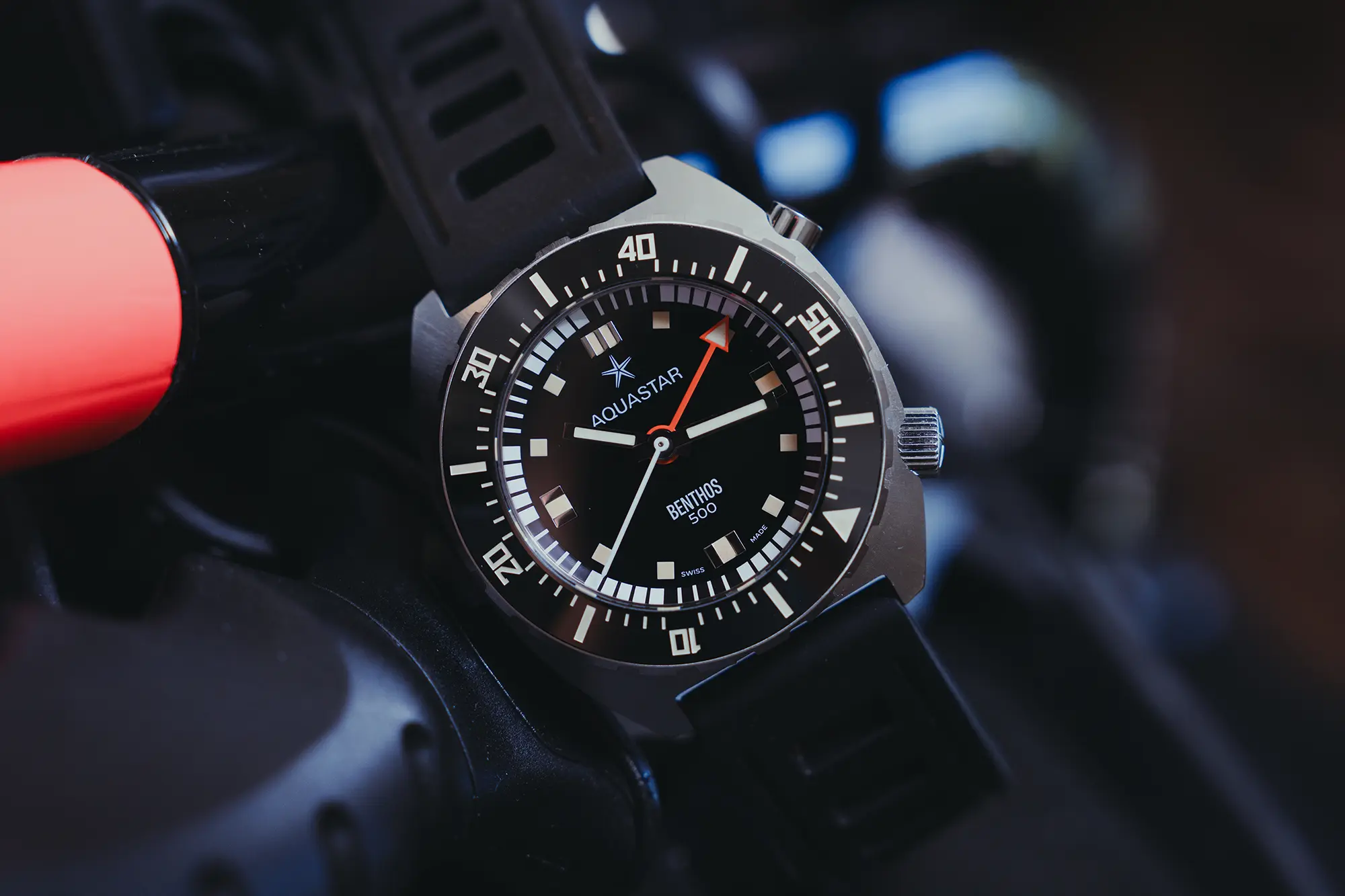
Comments
2 responses to “Video: Aquastar Revives the Benthos 500 Chronograph”
Hi Blake, great article; I very much enjoyed reading it! Quick niggle about the Sinn U50 (and I only memtion it because it makes Sinn’s achievement all the more impressive) is that it is in fact rated to 500m, instead of the 300m quoted here.
Thanks for the note! I just pulled mine out of the box to double check and you’re absolutely right. That watch is just amazing. Fixing the article now!